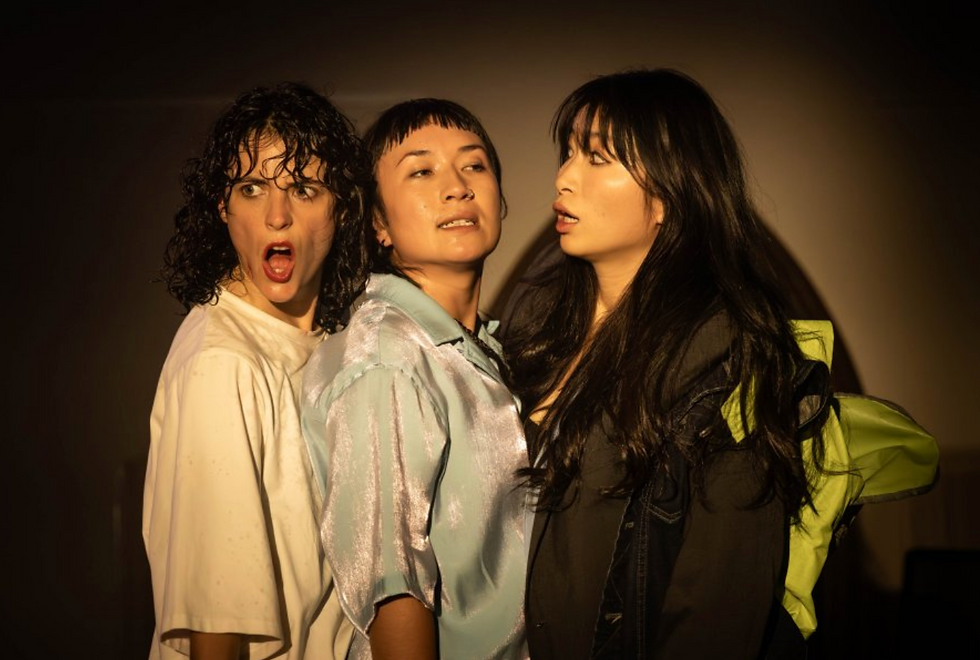Review: Power Chords Attached at Primrose Potter Salon at the Melbourne Recital Centre
- Theatre Travels

- May 15, 2019
- 4 min read
By Taylor Kendal
Ever since its construction, Notre Dame Cathedral has been a beacon for humanity. It is a place of worship, a place of sanctuary and forgiveness, and a place where even those who do not hold faith close to their hearts can appreciate and bear witness to something truly spectacular. It has been the subject of stories, both written and versed and was the inspiration and birthplace of some of history’s most prolific pieces. So when images of the renowned sight engulfed in flames were broadcast across the globe, the world stopped and felt that for a moment, one of the world’s greatest treasures could have been lost forever.
As part of their Above Beyond season, The Song Company has created Power Chords Attached, a joint collaboration with a bass guitar duo to showcase an example of the great works that had been written during Notre Dame’s construction in the 12th century by Pérotin and Léonin. It is with the intention to encompass the once-thought inimitable sound created within the hallowed halls of the cathedral, and combining efforts to create a combination of both polyphony and plainchant in a modern and more intimate setting in what is promised to be a stunning battle between the old and the new.
Within the intimate space of the Primrose Potter Salon at the Melbourne Recital Centre, the audience can’t help wonder just how this will be attempted, as the location can be considered a far cry from a cathedral. The group assembled under the guidance of performer and musical director Antony Pitts, and joined by bass guitarists Matthew Fackrell and Toby Peterson-Stewart from Melbourne-based metal group The Omnific. The audience was advised that while The Song Company does not always employ the use of microphones, it would be vital in the performance to imitate the sound expected within cathedral walls.
I will say this, I personally am not overly familiar with what is usually performed in a place of worship, nor do I have much of an idea about the length of a piece and the like (proven a little difficult for me as the evening’s program was completely sung through with no interludes or breaks), so I went in with very little expectations of how the night would unfold. With that said, I do have a deep appreciation for the stunning pieces that have heart in part thanks to modern culture, inspired by Gregorian chants. However, it took no time at all for the haunting sound of voices in precise and collective measure, matched with the modern strum of the bass guitar to resonate deep within.
The performance promised a battle of old and new; with the sound of classic composition verses the modern element of metal. While the sound of the conflicting genres seemed to work well together, the end result was a far cry from what had been expected; with it appearing as though the program was consisting of the classic offerings with the bassists accompanying an underlying tone rather than providing the audience with an exciting contrast to the traditional sound. This I found, was a disappointment, and not considered to be the brave and inventive feat that had been promised.
Of course, this did not mean that the performance was any less than what it was; a beautiful display of talent and an obvious love of the rich tapestry of music from the ages, lovingly handled with care by the performers. The performers had a beautiful rapport with each other, making the transitions in the music to flow quite effortlessly, and the thrum of the bass line added an eerie tone.
The bass performers were able to show their skills in their own right, injecting their style and tone into elements of the music, and having their time to shine throughout moments of the performance. Both Fackrell and Peterson-Stewart are clearly talented musicians, especially for their age, and felt comfortable on stage with their instruments, providing a modern feel and breaking up the traditional sound. Though, it was during the sporadic moments when their sound was not used within the piece that they seemed a little out of place, standing amongst the conflicting sound, waiting idly.
A highlight of the performance was the solo by Soprano Susannah Lawergren, who much like the members of The Omnific, was not present for a great portion of the performance, and at times weaved her stunning from the wings in a strange artistic decision. Though her solo piece was nothing short of hypnotic and almost ethereal; it showcased a pure talent that perhaps could have provided more to the performance than she was allowed.
The use of microphones in such a small performance space worked incredibly well and in The Sound Company’s favour; using reverb and echo to recreate the idea and sound of being performed in a larger space and succeeded in its mission to “bring a small sound to a big place, and a big sound to a small place”.
The performance was not quite what had been advertised, but still remained a stunning composition and a new take on rich traditions. It did deliver on one thing, painting homage to the history and legacy of one of the world’s most beautiful treasures with reverence and beauty.

All opinions and thoughts expressed within reviews on Theatre Travels are those of the writer and not of the company at large.




